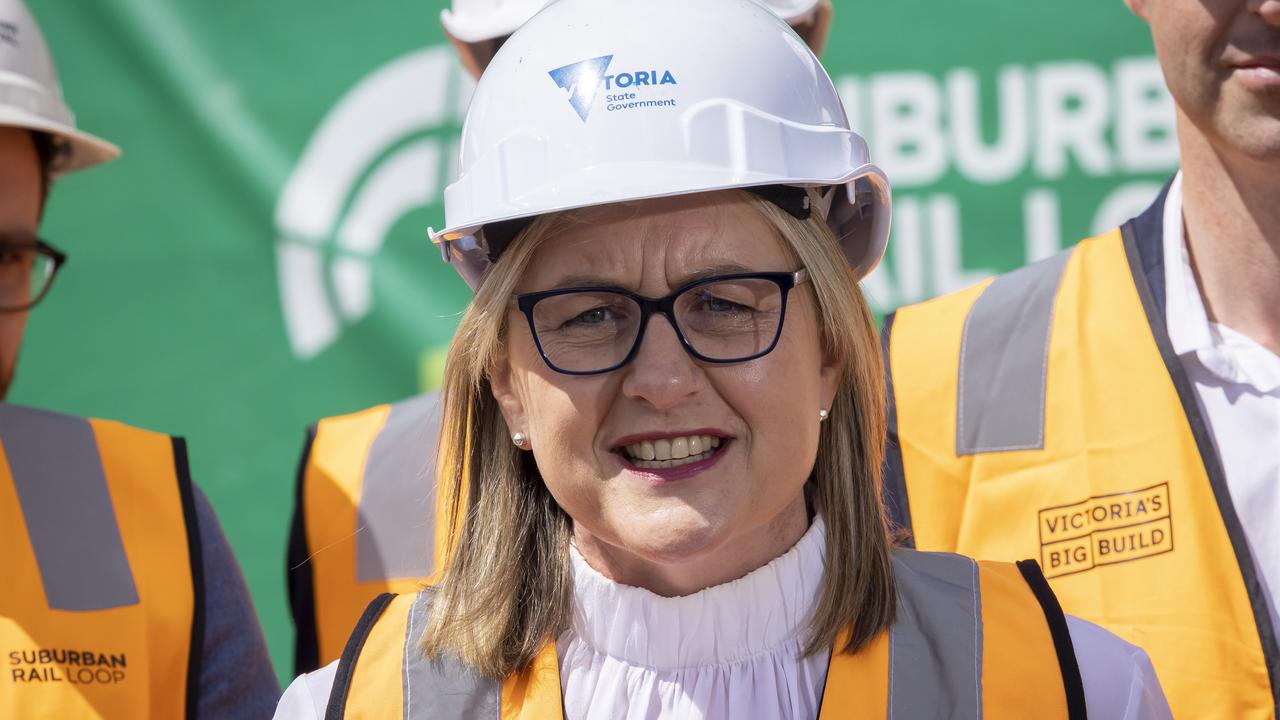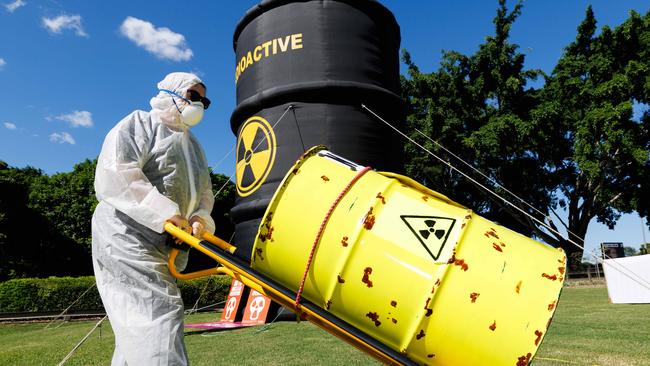
It was a cartoon protest that distilled this election’s infantile energy debate.
On Tuesday, three men, described as “union supporters”, gatecrashed the Opposition Leader’s press conference in the NSW South Coast seat of Gilmore. In low-rent street theatre, three middle-aged men bedecked in dollar-shop hazmat suits and sporting gas masks played a recording of an air-raid siren, as if an atomic bomb were about to detonate in downtown Nowra.
Given their age and clearly declining physical condition, it’s a fair bet that at least one of these cosplay activists has benefited from the very technology they demonise. A cardiac scan? A bone density test? A thyroid function check? All made possible by nuclear medicine, with isotopes probably produced a three-hour drive away at Lucas Heights.
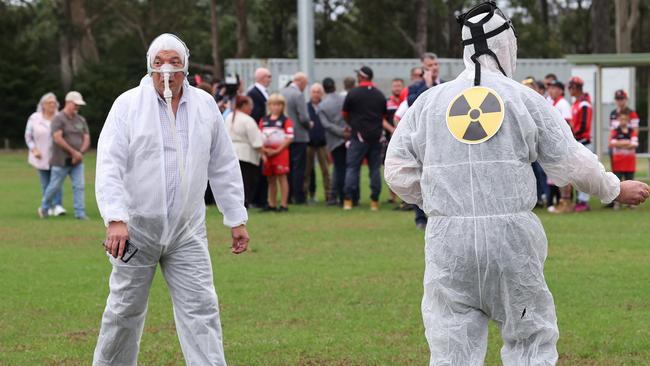
There, tucked away in Sydney’s south, is a national treasure: the Australian Nuclear Science and Technology Organisation’s 20-megawatt Open Pool Australian Lightwater reactor. This world-class facility produces lifesaving isotopes used in hospitals across the country every day. From diagnosing heart disease and cancer to assessing brain function and bone health, nuclear medicine underpins modern diagnostics. This organisation’s work is vital, unheralded and, like most things in the energy system, invisible to most.
Nuclear power is the densest form of energy on Earth and produces zero carbon emissions. Nuclear medicine saves lives. Nuclear power enhances life. As the energy analysts at Doomberg put it, if nuclear had been invented yesterday, it would be hailed as a planet-saving technology. It is expensive, but the real cost of chasing the net-zero illusion is tipped to hit $US10 trillion ($15.6 trillion) a year. And, unlike most of the green grifts gorging on this absurd transfer of taxpayer cash, nuclear power actually works.

Most major economies understand this. At the last global climate jamboree in Dubai, 25 nations signed a landmark pledge to triple global nuclear power capacity by 2050. Showing his now legendary visionary leadership, Australian Energy Minister Chris Bowen refused to join.
He is a young man. I hope, with the help of advanced medical technology, he lives a long life. Time will be a great teacher.
Those who fear nuclear energy should avoid scans and never visit France or any of the other 31 countries that use nuclear fuel. That list will grow. China has 58 nuclear reactors, 28 are under construction, and it plans to build 118 more by 2035. But fear not: our activists, lobby groups and state and federal energy ministers are way smarter than those foreign dolts.
This column, among a small army of commentators, has criticised politicians for the campaign’s dismal tone. They are only partly to blame because the real summits of stupid are scaled in the disinformation campaigns run by cashed-up pressure groups pushing cynical agendas under the banner of progress.
Take the self-described Smart Energy Council. It is the source of a risible piece of “analysis”, from where Labor draws the farcical $600bn cost of the Coalition’s nuclear energy pledge. The headline on the council’s own press release says its estimate for building seven nuclear reactors ranges from “$116bn to $600bn”, a spread so vast it reveals just how little rigour underpins the claim. When your margin of error is $500bn, you’re not doing analysis; you’re doing propaganda.
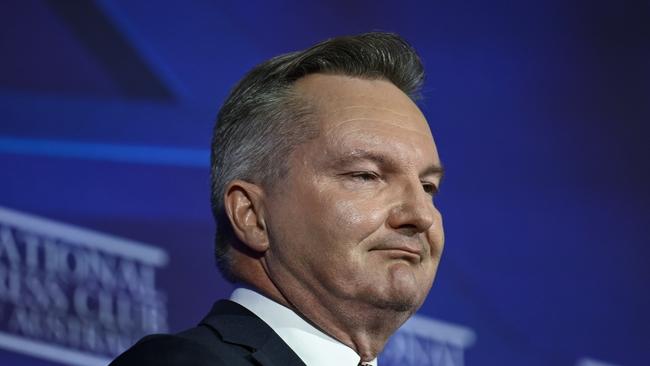
This is not the work of serious people. It’s a lobbying pamphlet from an industry association pushing its own barrow. As Berkshire Hathaway former chairman Charlie Munger said: “Show me the incentive and I’ll show you the outcome.” The incentive is to protect the business interests of a multibillion-dollar wind and solar industry that sucks money out of taxpayers’ pockets more effectively than a vacuum cleaner.
Given the council believes it fair to cast a wide net when doing analysis, let’s run a free-range thought experiment. The Smart Energy Council is backed by Chinese solar manufacturers, firms that operate as commercial handmaidens to the Chinese Communist Party. So what other motives may lie behind “analysis” that is essentially just a hit job on nuclear power and, by extension, nuclear submarines?
Could it possibly serve Beijing’s interests to get rich burning coal to churn out solar panels made with slave labour, sell them to the West and then bankroll activist campaigns that stop us from using the coal and uranium buried under our own soil?
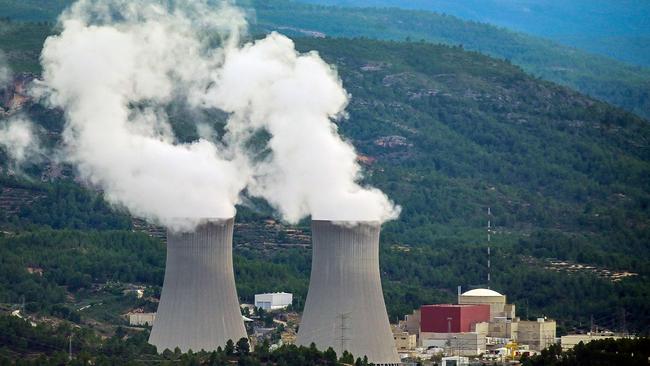
To be fair, I would put this at the $600bn end of the analysis scale, which means so far at the outer reaches of speculation as to be a moonshot. But by the standards of the council and the Albanese government, that’s close enough to use in a nationwide advertising campaign.
Let us note this in passing. It is a matter of historical fact that during the last Cold War, the Soviet Union covertly funded anti-nuclear protest movements in the West to undermine their energy security and defence. Strategic disinformation isn’t novel. It simply finds fresh targets and new useful idiots.
And only an idiot could swallow Australia’s current position on nuclear power. To do so requires anaesthetising the part of your brain that deals with hypocrisy.
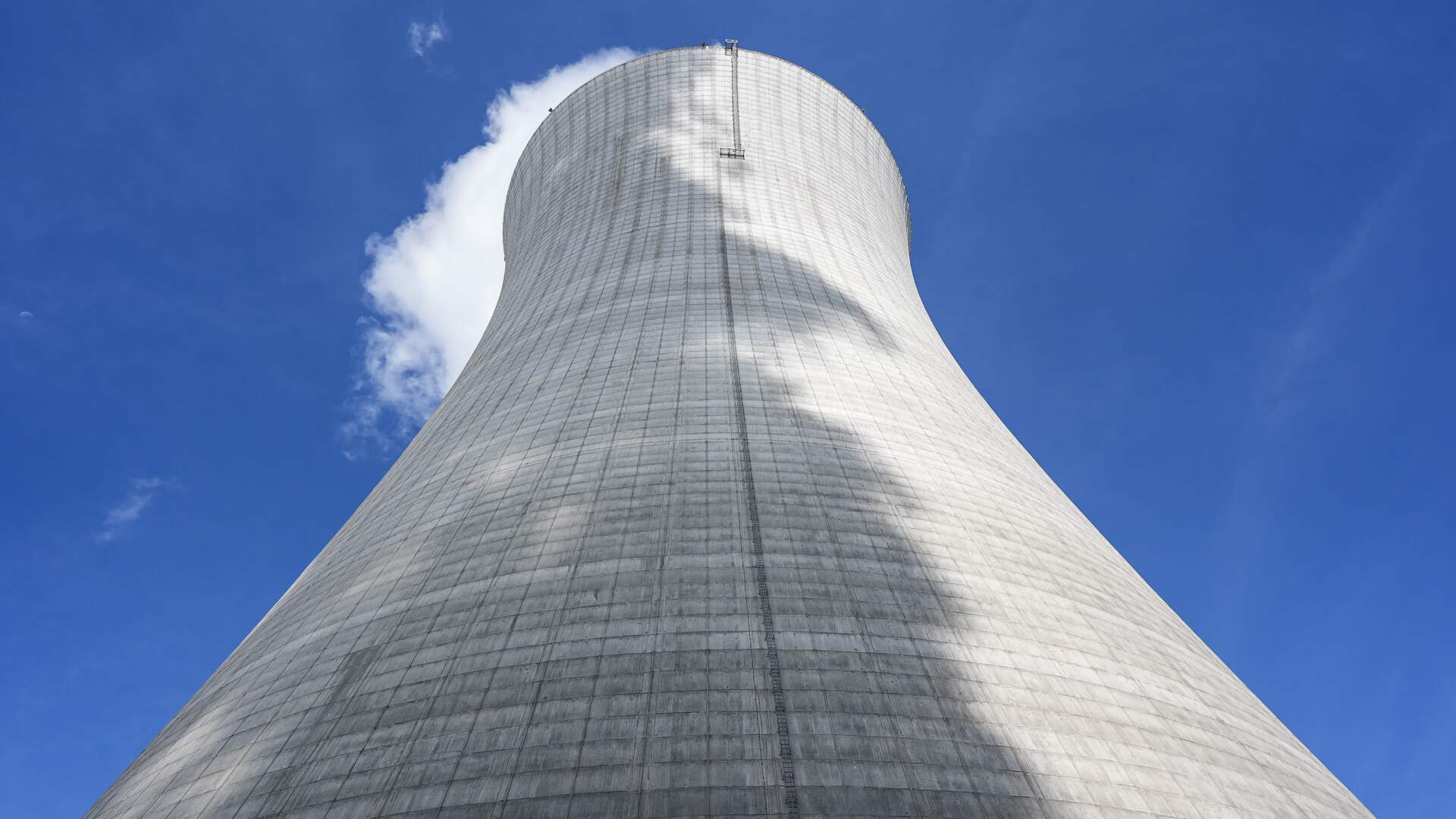
The Albanese government insists nuclear energy is too expensive, will take too long and is too dangerous to be part of Australia’s civilian power mix. Federal frontbencher Andrew Leigh was among the Labor MPs who festooned their social media with three-eyed koalas and fish, so don’t expect to see him on junkets to glow-in-the-dark Paris.
Yet this same government has committed to acquiring a fleet of nuclear-powered submarines: arguably the most complex, hazardous and expensive application of nuclear technology on the planet. These submarines will carry young Australian men and women deep beneath the sea, sealed in cigar-shaped steel tubes, entombed within metres of a nuclear reactor for months at a time. Over the span of their careers, those sailors will live in close quarters with technology the government claims is too risky to operate in the suburbs of Adelaide or the outskirts of Brisbane.
These same reactors will dock in Sydney and Fremantle, nestled in harbours right next to cities.
And what is the argument for nuclear subs? That the fuel source makes it the best possible technology, giving us a capability unmatched in range and endurance. That the wait is worth it because they will serve us for decades to come.
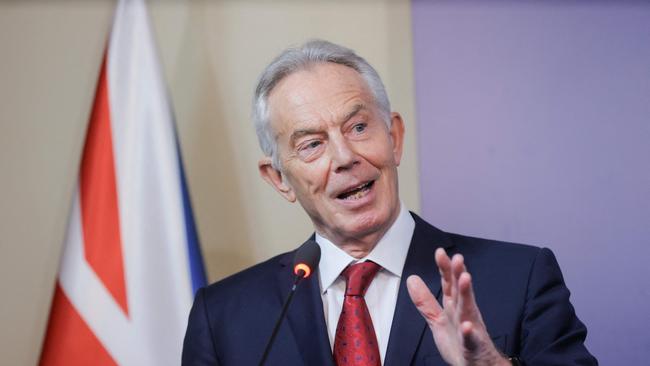
But if endurance, sovereignty and longevity matter so much in defence, why are they irrelevant in energy? Does the world end in 2050?
And if the government checked its own plan, in 2050 the weather-dependent grid will not function without 15 gigawatts of gas generation.
So Labor and the vast army of virtue signallers who claim their mission is to save the planet are arguing against the only zero-emissions technology with a hope of getting within cooee of their fantasy target: net zero.
The gulf between Labor’s position on nuclear subs and nuclear energy is not a gap in reasoning. It’s a chasm that no sound mind could cross.
And let’s end with this inconvenient truth. Net zero has zero chance of being met because the world is not serious about achieving it. New evidence of this emerges every day. The latest shoe to drop was former British Labour prime minister Tony Blair’s moment of truth-telling, when he admitted that limiting energy consumption and fossil fuel production was “doomed to fail”.
Downing Street swiftly made him recant but, to quote Doomberg again, in the battle between physics and politics, physics is undefeated.






